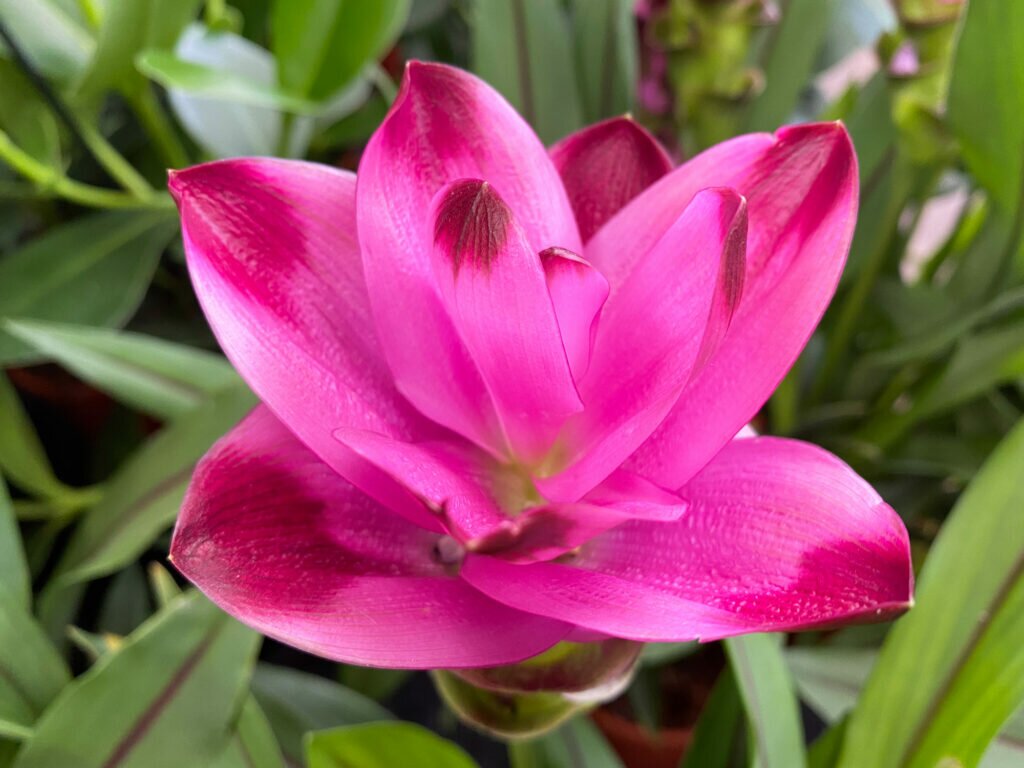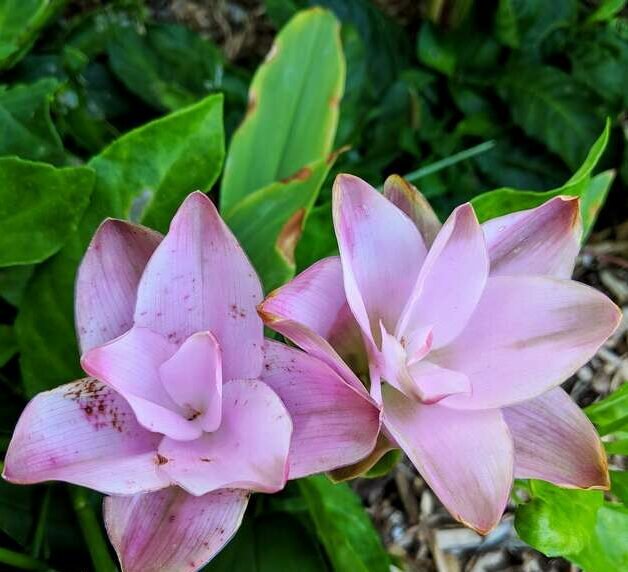
A rhizomatous herbaceous plant native to India and Malaysia, pink turmeric (Curcuma alismatifolia) is a chilly perennial of the Zingiberaceae family appreciated for its long flowering period as well as for the eponymous spice that is extracted from its roots (in the case of the species Curcuma longa ). Very decorative, this exotic plant with multiple names ( turmeric , Thai tulip , Indian saffron or tiger nut ) is generally grown indoors in our latitudes.
Turmeric, Thai Tulip, Indian Saffron
Curcuma alismatifolia develops in the ground a clump about one meter high composed of large oblong leaves with a dark green hue. The plant begins to bloom in May-June.
Then appear thick flower stems ending in long spikes of bracts. These are first green and then take on a different color depending on the variety. Thus, the flowers of pink Turmeric (also called Thai tulip ) turn bright pink, while those of Indian saffron turn yellow.
The flowering of Turmeric has the advantage of being very long-lasting since, under good growing conditions, it can last until the end of summer.

Where to grow Turmeric?
Given its origins, tiger nut prefers moist heat. However, it is quite possible to cultivate it in the ground all year round in the extreme south-east of the country.
Elsewhere, its cultivation will be carried out in pots, indoors most of the year, in the garden in summer . Then expose the Turmeric in a bright place, avoiding despite everything direct sunlight which risks burning the leaves and bleaching the bracts. Make sure it gets constant heat while avoiding drafts. Monitor the humidity of the air which must remain high. For all these reasons, Turmeric particularly appreciates being grown in greenhouses or verandas, two places that meet many of its needs.
During the summer, you can keep the plant in the living room to enjoy its beautiful flowering even more. In this case, spray the foliage daily and place the pot on a bed of damp clay pebbles to help maintain satisfactory humidity.
Accompany the Turmeric with low green plants. Its flowering will be further enhanced.
What maintenance to perform?
How to water?
During the flowering period, water the Turmeric two or three times a week. Use rainwater or low-calcium tap water. Outside this period, reduce to one water supply per week from spring to early fall.
The foliage is turning yellow, time to prune!
When the foliage begins to turn yellow in October-November, bring all the stems back to the base. Store the pot in a bright, unheated room, between 15 and 16 degrees, all winter. This forced winter rest is beneficial for preparing the new vegetation. Only water once a month, just to prevent the soil from drying out too much.
Fertilizer supply
Between April and September, remember to fertilize Indian saffron every 8 to 10 days. Use a fertilizer for flowering plants such as geranium fertilizer.
When and how to repot?
Repot the tiger nut every year in March to stimulate its growth. Replant it in a slightly larger pot so that the rhizomes can continue to spread well. Then use a mixture made up of ordinary potting soil and heather soil (or leaf mold ) in equal parts. Water copiously at the end.
How to propagate Turmeric?
If you want to take cuttings of Turmeric to give to your friends, for example, divide the rhizomes in early spring.

Curcuma longa, substitute for Saffron
This species of Turmeric cultivated throughout Asia offers bright orange rhizomes whose delicately spicy flavor is particularly appreciated. Reduced to powder, the roots are also used as food coloring to replace saffron, hence the name Indian saffron which has been attributed to it. These pigments are also used as a dye for fabrics. The rhizomes are pulled out when the foliage begins to die back, as the plant enters its dormant period.

